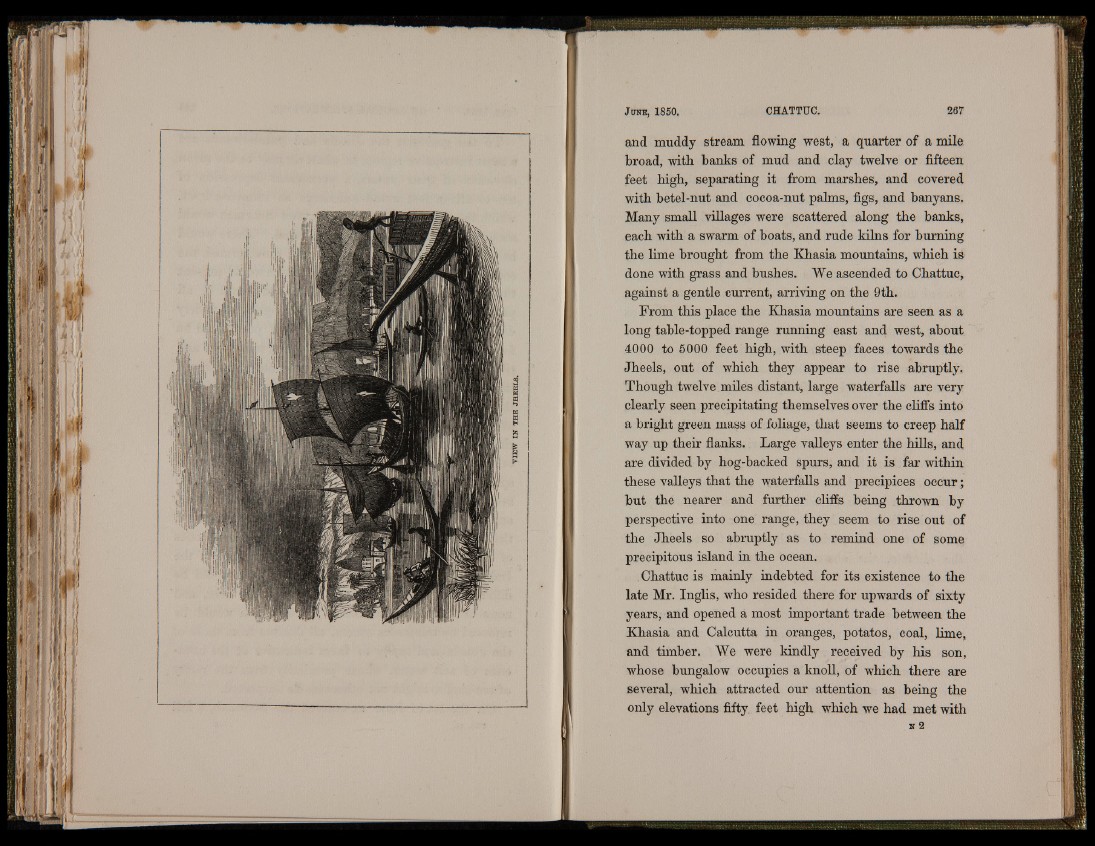
VIEW IN THE JHEELS.
and muddy stream flowing west, a quarter of a mile
broad, with banks of mud and clay twelve or fifteen
feet high, separating it from marshes, and covered
with betel-nut and cocoa-nut palms, figs, and banyans.
Many small villages were scattered along the banks,
each with a swarm of boats, and rude kilns for burning
the lime brought from the Khasia mountains, which is
done with grass and bushes. We ascended to Chattuc,
against a gentle current, arriving on the 9th.
From this place the Khasia mountains are seen as a
long table-topped range running east and west, about
4000 to 5000 feet high, with steep faces towards the
Jheels, out of which they appear to rise abruptly.
Though twelve miles distant, large waterfalls are very
clearly seen precipitating themselves over the cliffs into
a bright green mass of foliage, that seems to creep half
way up their flanks. Large valleys enter the hills, and
are divided by hog-backed spurs, and it is far within
these valleys that the waterfalls and precipices occur;
but the nearer and further cliffs being thrown by
perspective into one range, they seem to rise out of
the Jheels so abruptly as to remind one of some
precipitous island in the ocean.
Chattuc is mainly indebted for its existence to the
late Mr. Inglis, who resided there for upwards of sixty
years, and opened a most important trade between the
Khasia and Calcutta in oranges, potatos, coal, lime,
and timber. We were kindly received by his son,
whose bungalow occupies a knoll, of which there are
several, which attracted our attention as being the
only elevations fifty feet high which we had met with
x 2